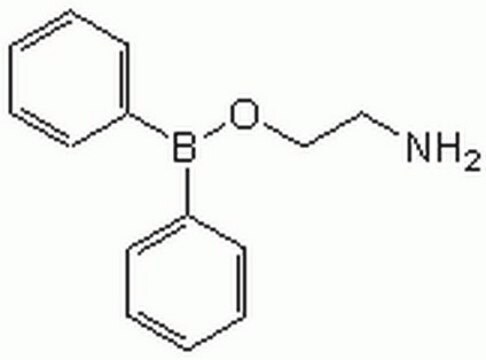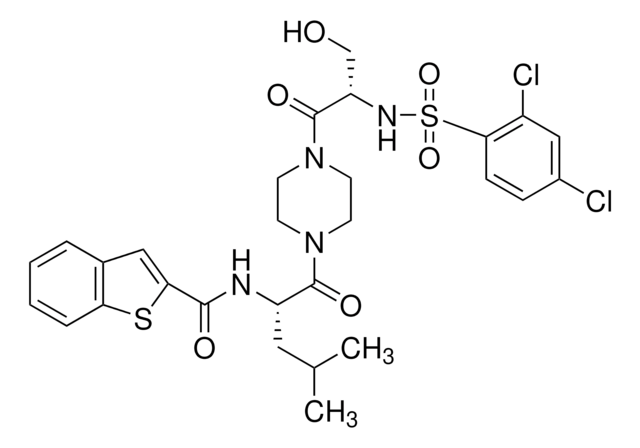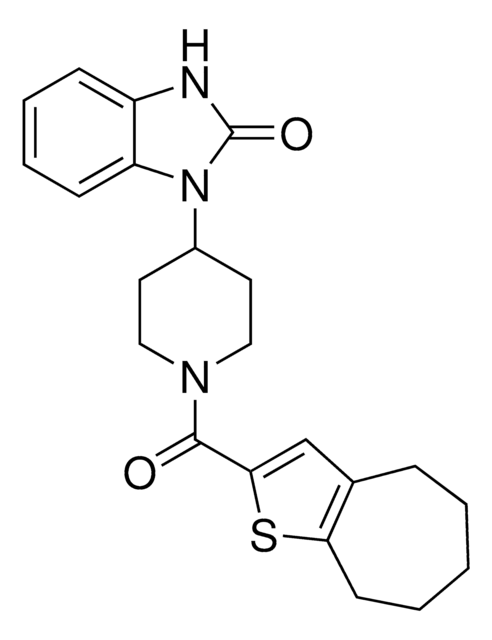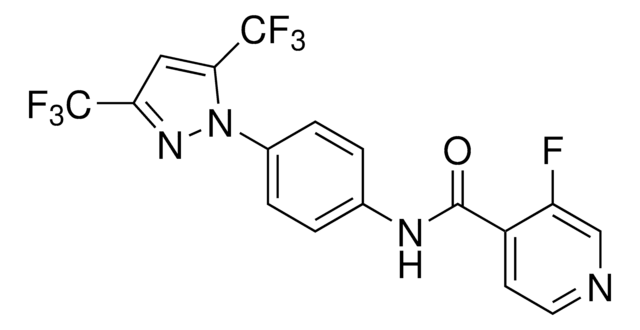Key Documents
P0032
Pyr3
≥98% (HPLC)
Synonim(y):
Ethyl-1-(4-(2,3,3-trichloroacrylamide)phenyl)-5-(trifluoromethyl)-1H-pyrazole-4-carboxylate
About This Item
Polecane produkty
Poziom jakości
Próba
≥98% (HPLC)
Postać
powder
kolor
white to beige
rozpuszczalność
DMSO: 20 mg/mL, clear
temp. przechowywania
2-8°C
ciąg SMILES
CCOC(=O)c1cnn(-c2ccc(NC(=O)\C(Cl)=C(\Cl)Cl)cc2)c1C(F)(F)F
InChI
1S/C16H11Cl3F3N3O3/c1-2-28-15(27)10-7-23-25(12(10)16(20,21)22)9-5-3-8(4-6-9)24-14(26)11(17)13(18)19/h3-7H,2H2,1H3,(H,24,26)
Klucz InChI
RZHGONNSASQOAY-UHFFFAOYSA-N
Działania biochem./fizjol.
Members of the canonical transient receptor potential (TRPC) channel family are ion channels which conduct Ca+2 and are activated by membrane receptor-mediated stimulation of phospholipase C (PLC) activity. However, TRPC3 and other family members are also activated by membrane-independent diacylglycerol (DAG). BTP1 and BTP2 are pyrazoles that block TRPC channels, but they are not specific for TRPC subtypes. This channel is implicated in various processes, including B cell receptor (BCR)-mediated Ca+2 oscillations, activation of nuclear factor of activated T cells (NFAT), and promotion of cardiac hypertrophy.
Kod klasy składowania
11 - Combustible Solids
Temperatura zapłonu (°F)
Not applicable
Temperatura zapłonu (°C)
Not applicable
Certyfikaty analizy (CoA)
Poszukaj Certyfikaty analizy (CoA), wpisując numer partii/serii produktów. Numery serii i partii można znaleźć na etykiecie produktu po słowach „seria” lub „partia”.
Masz już ten produkt?
Dokumenty związane z niedawno zakupionymi produktami zostały zamieszczone w Bibliotece dokumentów.
Klienci oglądali również te produkty
Nasz zespół naukowców ma doświadczenie we wszystkich obszarach badań, w tym w naukach przyrodniczych, materiałoznawstwie, syntezie chemicznej, chromatografii, analityce i wielu innych dziedzinach.
Skontaktuj się z zespołem ds. pomocy technicznej









